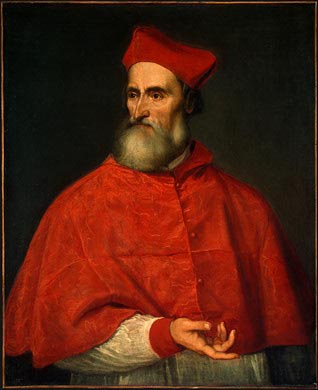
July 2010 – April 2011
This project started off in 2005 as a Cardinal costume for Aaron to wear to the Renaissance Faire. His concept was to go as something “better than royal,” something with divine influence! But he also wanted it to be simple and comfortable. Titian’s 1540 portrait of Cardinal Pietro Bembo inspired the project. Various elements of the costume were taken from other portraits. You will find a link to my research gallery of Italian portraits, Cardinals from 1510-1546, below. If you would like to read all about the making of the first Cardinal costume from 2005, please also see the link below. I wrote up quite a bit of documentation on this! Yet that first ensemble was meant to be a trial run…
I picked up 10 yards of this red silk taffeta for half-price, very shortly after completing it. But it took several false starts over a period of five years to realize the final costume. To tell the truth, I considered reallocating the fabric to other projects on more than one occasion. Aaron, who is normally reluctant to offer opinions on my hobby, defended the silk. “That’s supposed to be for the Cardinal!” So the silk was spared.
The outfit is heavier than you would expect. Both the gown (soutane) and cape (mozzetta) are underlined in muslin and the garments drape very nicely with this extra weight. The gown is fully lined in a smooth, fine cotton batiste. The cape was originally lined in the same – until I discovered that even the slightest movement caused the white lining to show. So I replaced it a few years later with red cotton voile.



My first patterns made in 2005 were not bad interpretations. But in the time that passed between the two versions, my pattern drafting, sewing and fitting skills were improved. So the project was redrafted from scratch. For what it’s worth, a Simplicity costume pattern #9887 was used as a base for the gown. I wouldn’t necessarily recommend it over any other standard Renaissance gown pattern. My final version is heavily modified. But I always work with something on paper as a jumping-off point and it was a good size for a tall man. The garment’s style lines were redrawn to imitate period fabric widths, and I incorporated wide gores at the sides. The Loose Gowns in both Patterns of Fashion and The Tudor Tailor were referenced for all key measurements (hem width, shoulder, etc). Also for pattern shapes and overall sizing. I think the gown looks pretty spiffy worn all by itself. Among other changes, the neckline was fitted. The armscye were raised to accommodate Tudor Tailor Loose Gown Sleeves, Style B on p. 74. Sleeve openings are faced, and the wrists close with two buttons. Center front has an extended facing and, naturally, all the buttons are functional. This time around I kept the button layout simple: buttons spaced evenly, with a single pair at the neck of the cape.
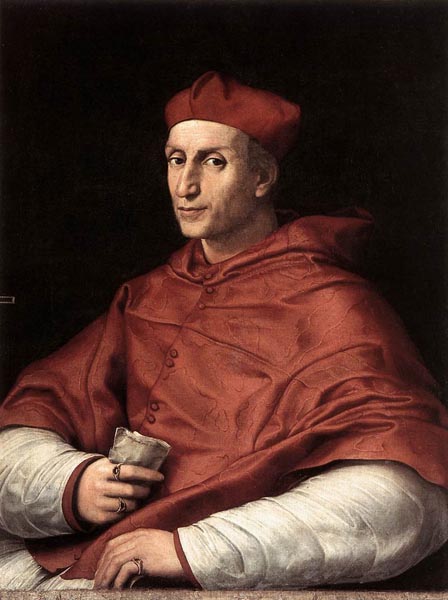
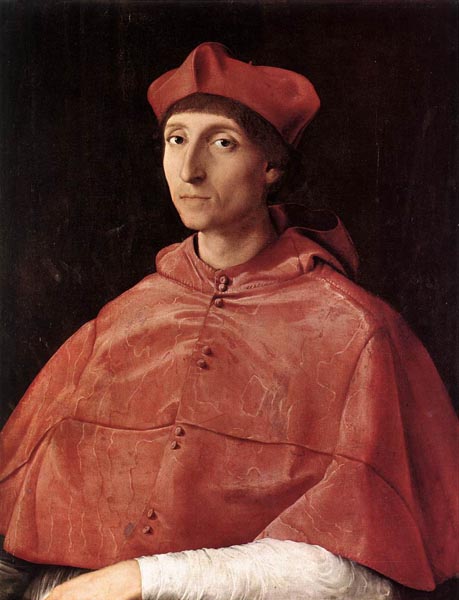

The mozzetta is a 3/4 circle cape with a pointy hood. The full circle in my original 2005 version proved too wide to match the majority of the portraits from this era. I used Truly Victorian’s 1890s cape as a base and lengthened it. In a fitting on Aaron, I marked the hem parallel to the ground. The final pattern is a funny looking oval which accommodates the extra width at the shoulders. As discussed in my original write up, all the vertical and horizontal seam lines in the Raffaello cardinal are included. Since completing the first version, I saw the Portrait of Cardinal Bibbiena in person. My conclusion: a single horizontal tuck runs across the front. This tuck was worked into the pattern as well, though it isn’t visible in the image above. The tuck was sewn on the center and side front pieces separately, before the underlining was added. Then the two pieces were joined with a vertical seam.
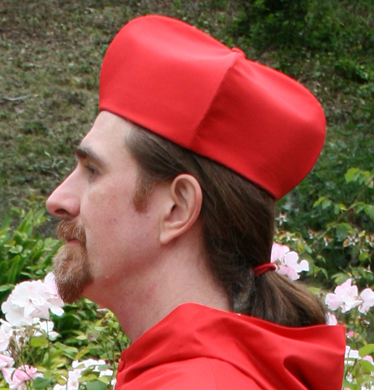
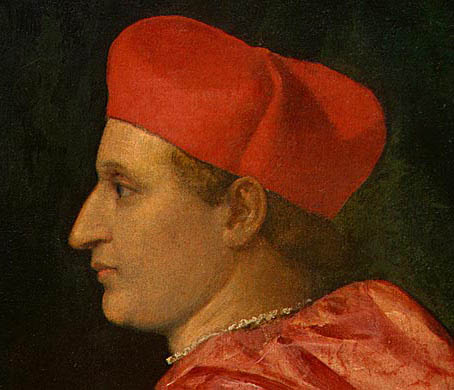
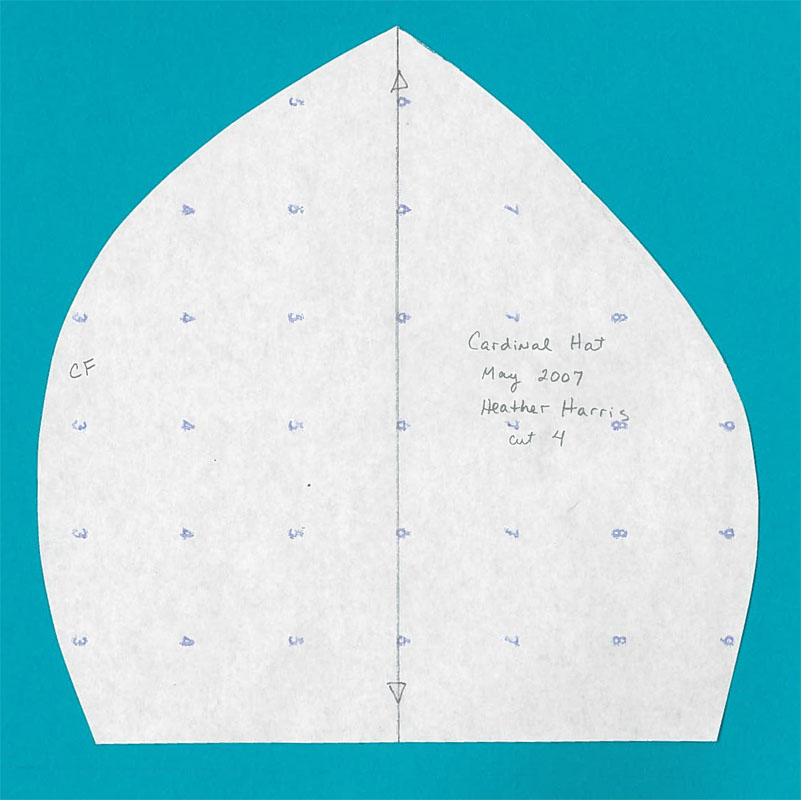
Thanks to the Titian above, there is a nice side-view on which to model the pointy hood. It took quite a bit of fussing to get the right look, but I think my pattern comes pretty close. It’s still a non-functional hood in that it can’t be worn over the head, but it’s quite a different shape than my first attempt based on Alcega’s. The hat was inspired by the same portrait. Here’s a side-by-side hat comparison, with my final pattern. Though the costume was originally inspired by a 1540 cardinal, Aaron just wasn’t keen on the 1540s hats: he thought they looked like mouse ears.




